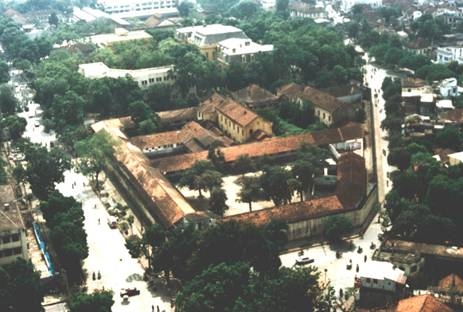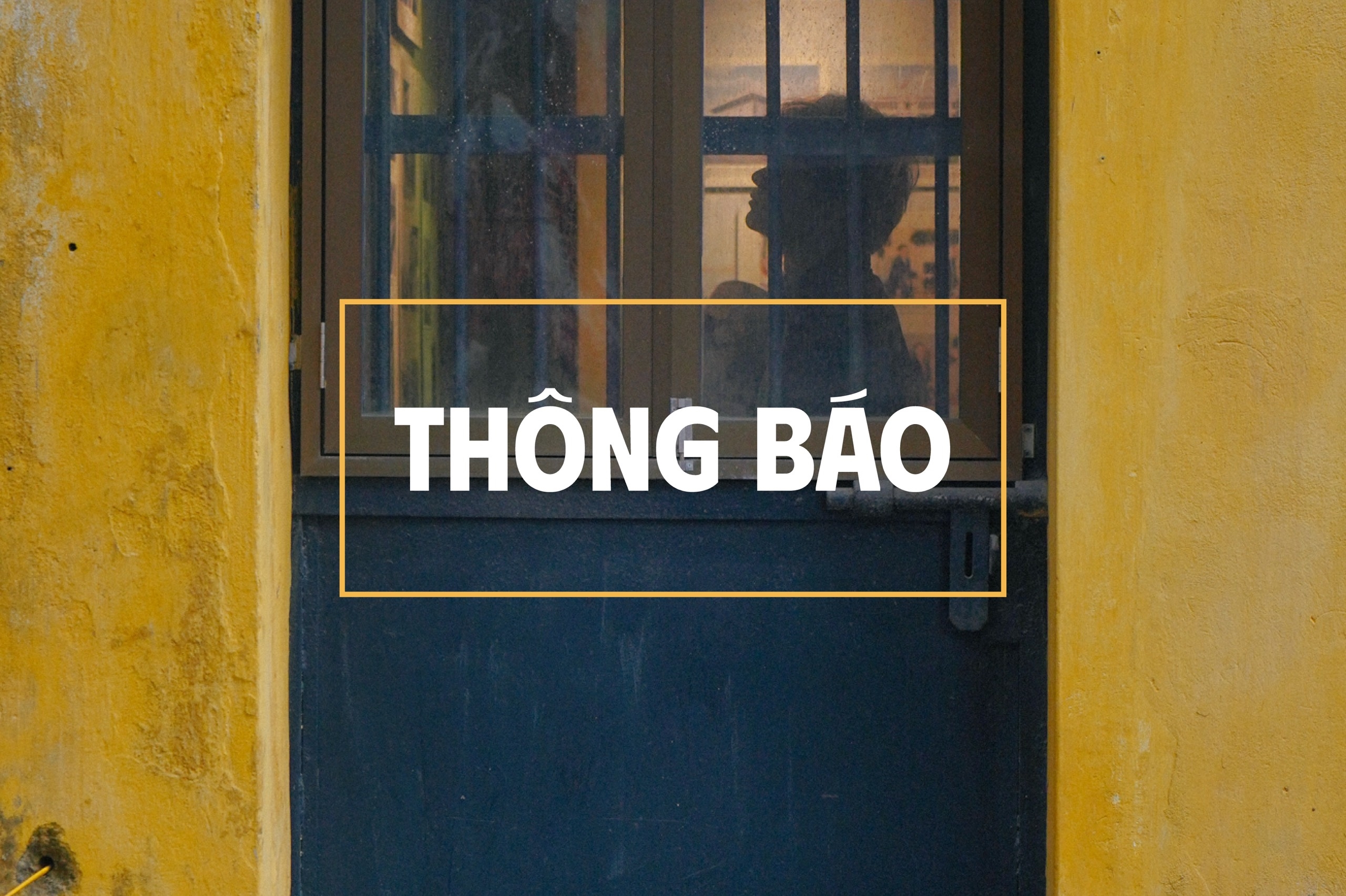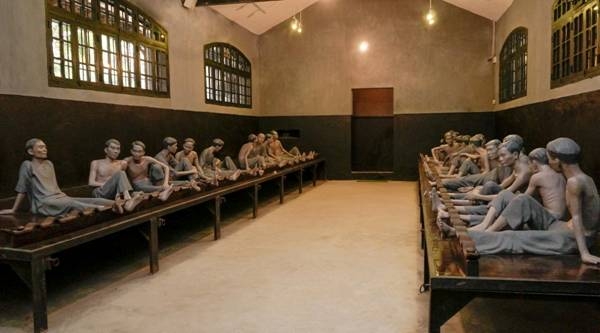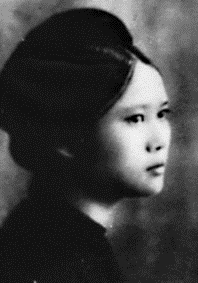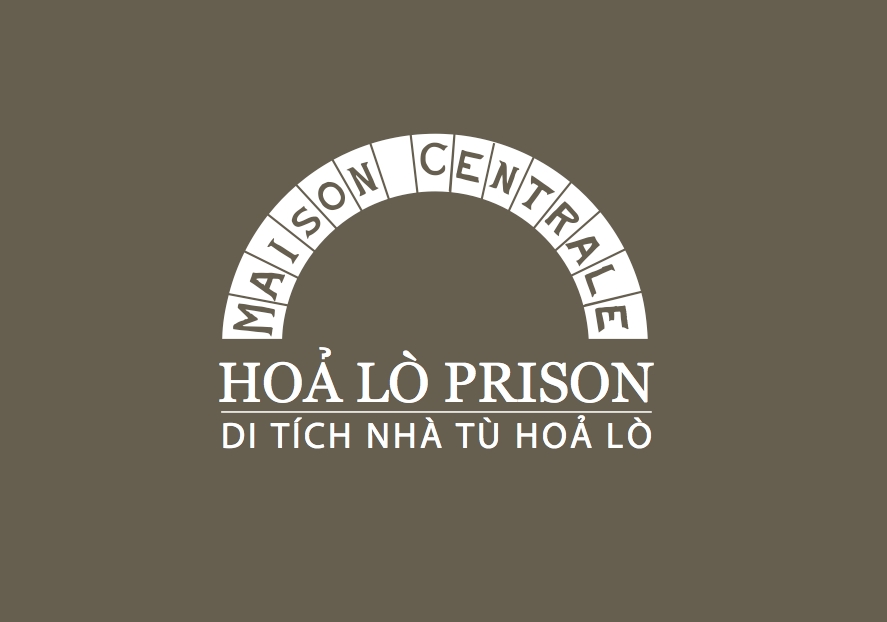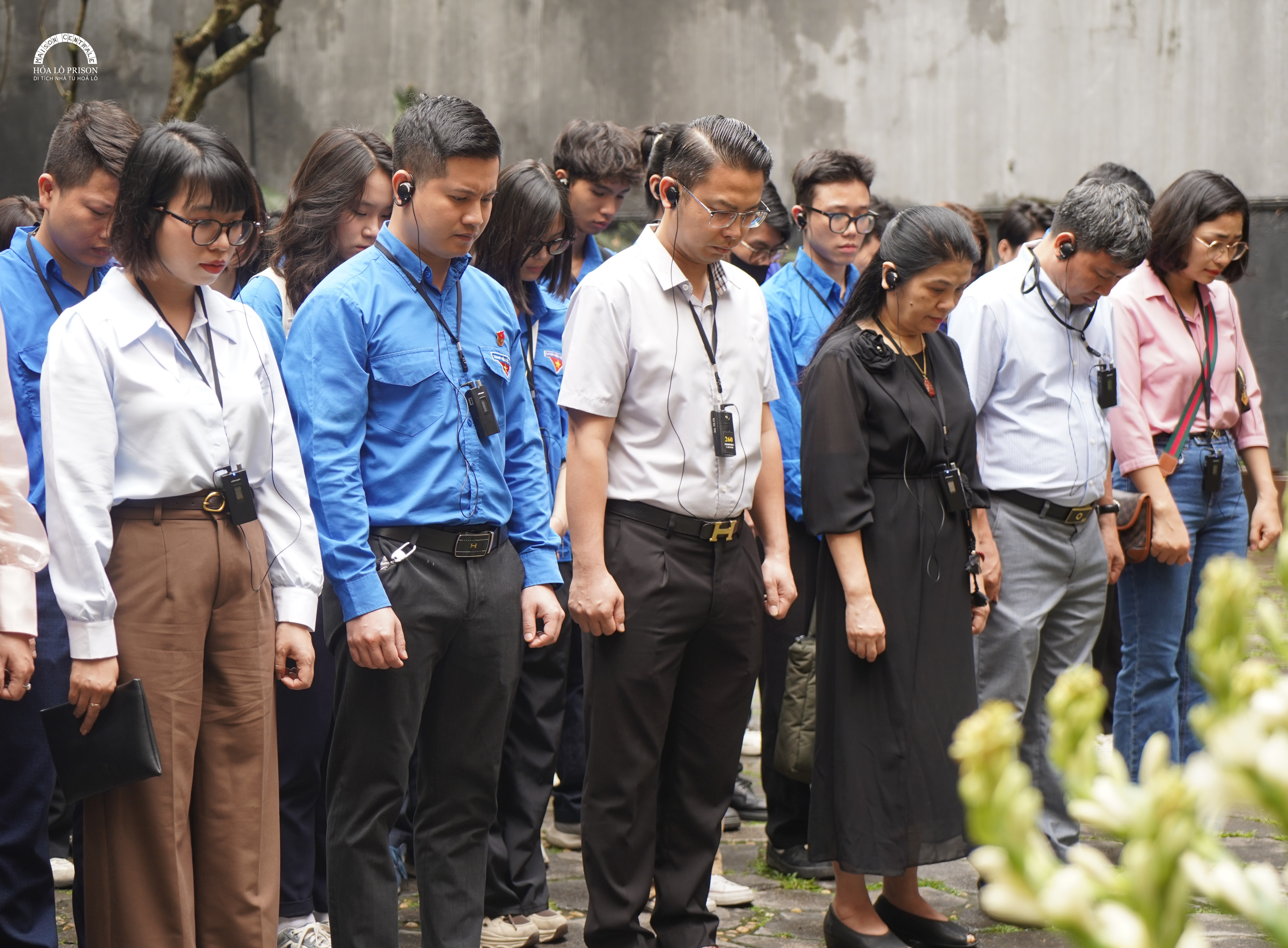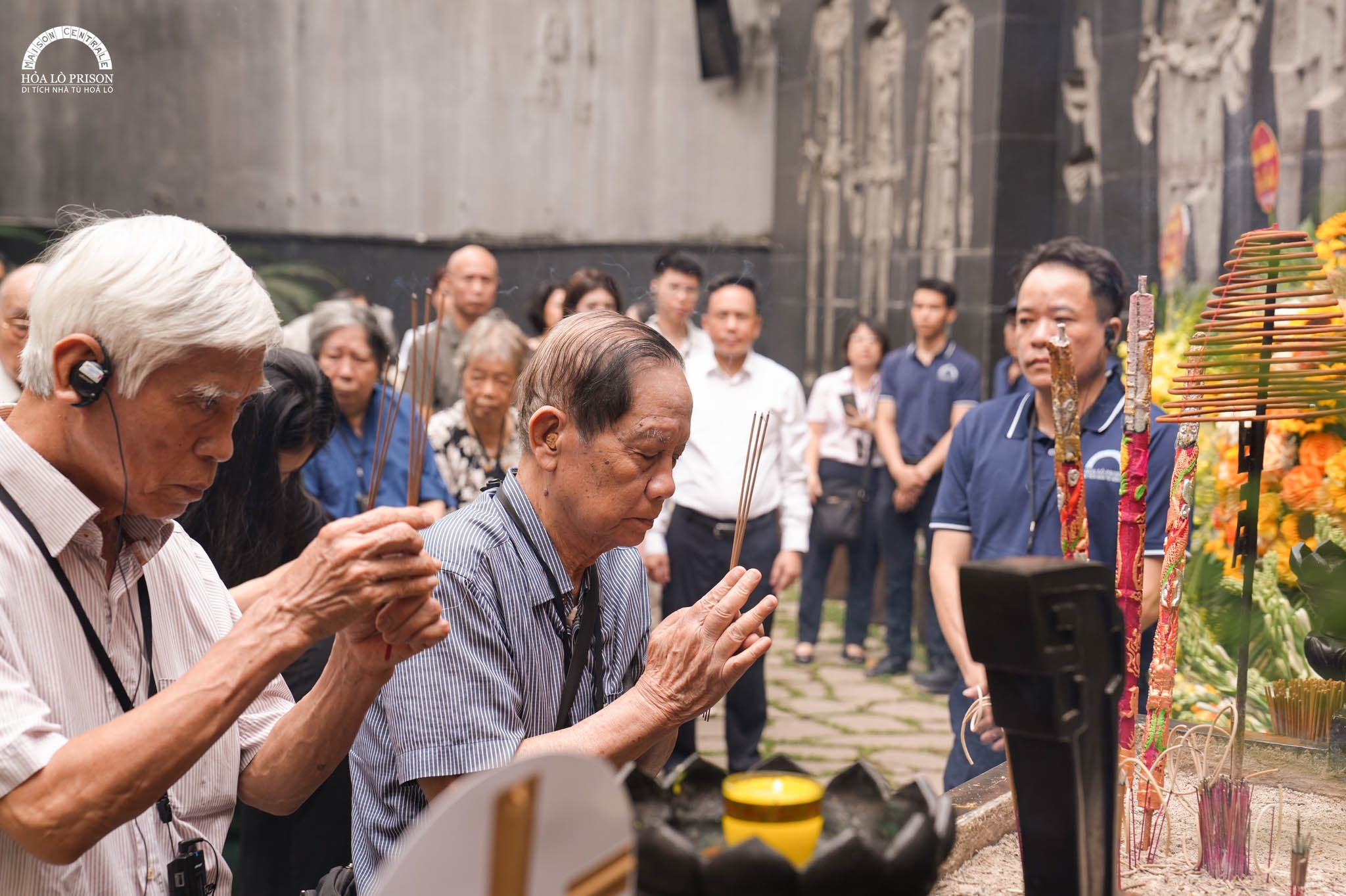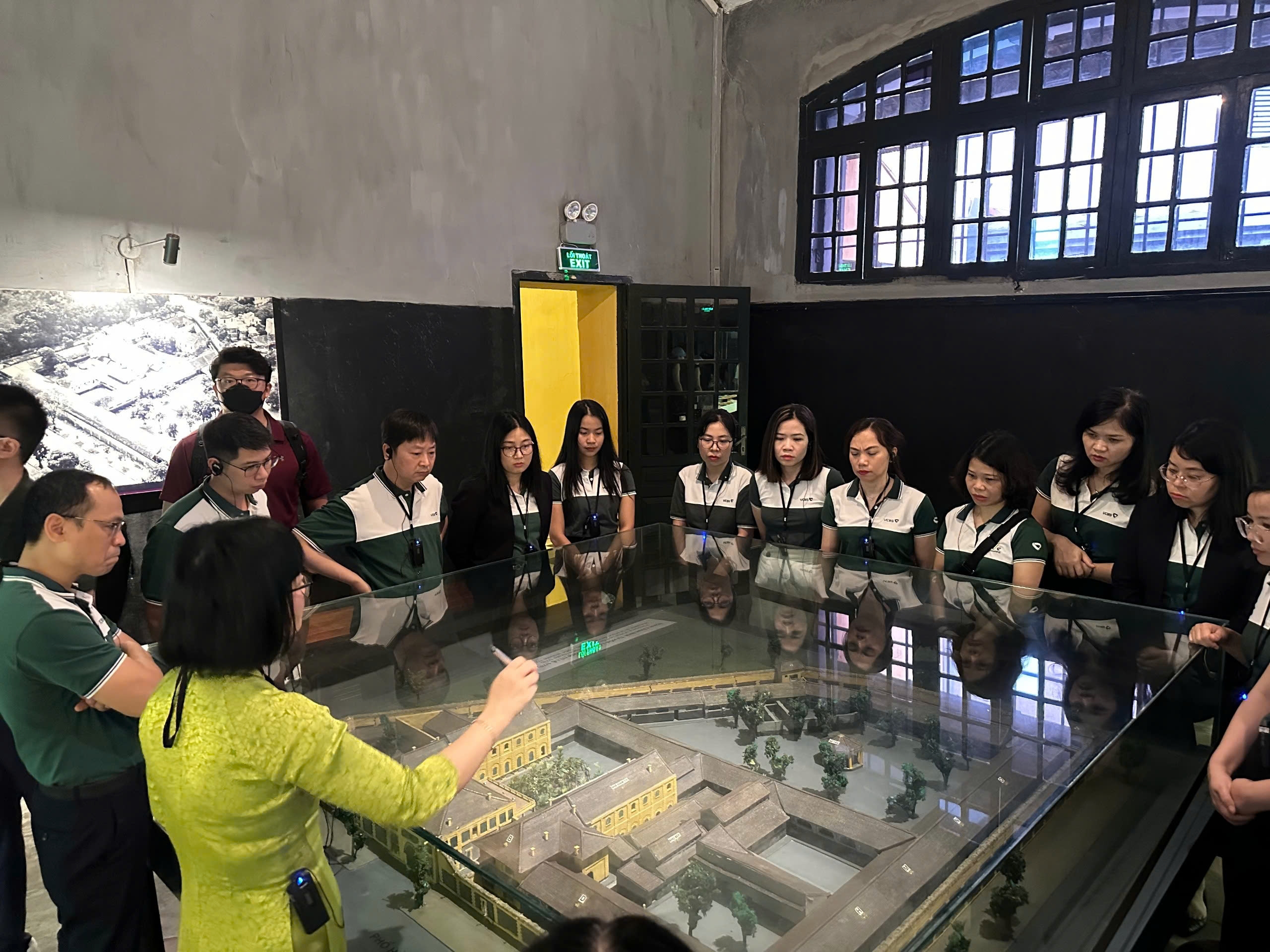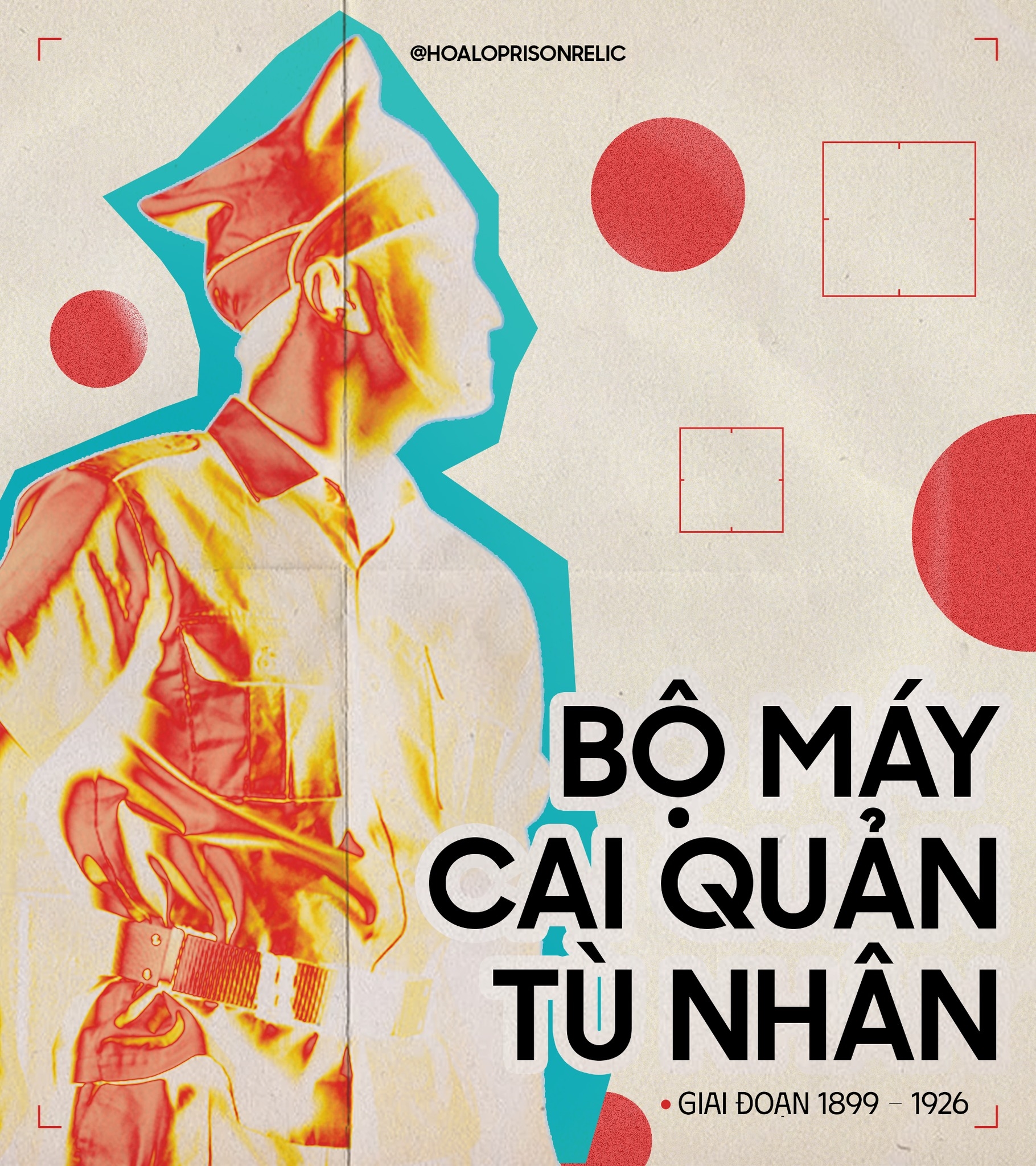Imprisoned Regulations Political Prison
The detention rooms were different sizes but built with the same design: houses having four tile roofs and solid brick walls, painted grey, with a few very small windows near the roof, making the rooms very dark and stuffy. Each room had open-air WC, sometimes no being cleaned, thus feces and urine spilled all over the floor, giving out very filthy, slimy, and stinking smell. In Hoa Lo Prison complex, there was a special dungeon (cachot) and death cell.
The prisoners must do hard labour such as: repairing houses or roads, building dikes, cleaning toilets... They had to do hard work because results affected to their rations, if they couldn’t finish the work, they got no food.
The French colonialists used many different types of punishments and suppression against Vietnamese patriotic and revolutionary fighters: being kept in dungeons (cachot), legs shackling all night, hard labour, to name a few.
The jailers in connivance with contrators cut down the food rations of prisoners and used the bad quality of food: mould - rice, spoiled, not nutritious… Every year, they was provided two uniforms and one blanket for the winter.
Due to poor quality food and poor sanitary conditions, many prisoners contracted diseases such as beriberi, typhoid, dysentery, malaria, etc., or were unable to cope with their illnesses. Many of them died before their prison terms expired.

Cell E
Male political prisoners was imprisoned with the harsh regime by the French colonist, whose purposes were to repress the minds of the Vietnamese patriots.
In 1930 - 1931, the jailers apply many the strictly regulations to prevent the politcal prisoners from establishing orgnizations in the prison. Despite being shackled, patriotic and revolutionary fighters were staunch, persistent and undaunted in their struggles against French harsh prison conditions under different forms such as shouting, going on hunger strikes, etc., forcing the enemy to make concessions.
From 1940 - 1945, they held many class teaching about politics, and established the Party in the Prison. This helped them develop leaders in the fighting movement. They held classes and studied by themselves. They searched for political arguments which help the prisoners to have good understanding of purpose, and to have much more deeply formed rationale for fighting. Writing the documents at night, drilling the wall to provide hidden storage for the documents, kept the important documents safe from the guards.
From 1946-1954, Cell E was used to arrest the prisoners of war. The war spreading made the prison often crowded. In prison, with many difficulties, challenges, but Vietnam patriots and revolutionaries always kept their faith in the Party and the will to fight.

Dungeon (Cachot)
Cachot (dungeon) for prisoners who were sentenced for violating the prison’s rules and regulations. Cachot in Hoa Lo was “hell of hell,”, rooms were dark, narrow and stuffy and lacking of oxygen. Prisoners detained in the cachot were shackled all day, being fed bland food, while eating and using the toilet in the same place. So, after being detained in the cachot, prisoners often suffered from eye diseases, face edema, body swelling, limbs became slow moving. In 1932, comrade Truong Chinh - former General Secretary of Viet Nam communist Party was held here, after a meeting celebrated May 1st.

Shackles - French colonist used in Hoa Lo Prison
These are feet shackles, with 2 parts: metal part and wooden part. These are shackles used for prisoners in solitary confinement area.
In preparation for the escape, the first thing the prisoners should do was to seek how to withdraw from the shackles. However, being detained for a long time, most prisoners were weak. In order to escape successfully, prisoners must withdraw their feet from the shackles to exercise to regain health. Prisoners had used lard-soaked rags to apply the bottom of the shackles made of wood and burned it by charcoal. To avoid detection by supervisors, after burning, the holes were covered by putting lamp soot mixed with oil in it.
Pulling their legs out of the shackles, exercising and preparing for jailbreak were brave and daring acts of death row inmates. It confirmed the desire to be free, to get rid of jail, returning to the revolution of the communist patriotic soldiers.

Clothes - for political prisoners in Hoa Lo Prison
Prisoners were required to wear clothes with specific signs of the prison. Clothes in white, with two printed letters MC (2 initials, abbreviations of French words Maison Centrale: Central House), without buttons.
Clothes distributed to prisoners were often too short compared to the body sizes, with poor sewing quality that the sewing thread became loose even before prisoners wearing them. In addition to clothes, each prisoner was provided with one thin blanket to use in winter without warm clothes and bed nets.

Bowls - for political prisoners in Hoa Lo Prison

Plates, spoons - for political prisoners in Hoa Lo Prison
For fear that prisoners used bowls, chopsticks, spoons as weapons, guards did not let them use those things and forced them to use wooden trays, with pots to contain rice and food (prisoners called them “lap la”).
Prisoners also made use of occasions when they were released from the cells to go to work or do custodial work in the prison or when they were permitted to go to the yard, they often secretly picked straight eagle branches or unused wood basket rings to create chopsticks used in their meal. With the creativeness and craftsmanship, the prisoners picked up coconut shells thrown away by soldiers to create bowls and spoons used as tools in meals.

Boxing gloves - French colonialists used for torturing political prisoners

Fuel can - French colonialists used for torturing political prisoners

Electrical engine - French colonialists used for torturing female political prisoners

1 of 2 guillotines that the French colonialist used to behead revolutionary patriotic soldiers imprisoned in Hoa Lo prison: Nguyen Thai Hoc, Pho Duc Chinh (1930), Nguyen Hoang Ton (1931), Nguyen Duc Canh, Ho Ngoc Lan (31/7/1932)…
This is 1 of 2 guillotines French colonist brought to Ha Noi in the end of 19th century. Guillotines invented by French medical doctor named Joseph-Ignace Guillotin. This killing tool was considered by the French “more humane” than other execution methods used in the Middle Ages (hanging and cutting off different parts of body, using horses to tear body apart, etc).
The guillotine includes the following main parts: cutting table is a flat wooden surface, prisoner being executed would be placed upright on the table. Head of the prisoner would be taken through the round hole of the guillotine; slashing shelf is an iron frame with a height of almost 4m; the inside is installed a groove for the cutting blade to work. The cutting knife is made of steel, its blade was crossed; the guillotine blade would be pulled up; during execution of prisoner, the executioner shall press the button and pull the rope so that the blade sharply drop down from height. The falling force of guillotine blade is equivalent to 60kg. After completion of the execution, the head prisoner shall fall into the sheet metal tank, and the body shall be placed in a rattan basket.
Usually, after executing capital punishment of a prisoner, the colonial authorities often put the prisoner’s head in a muzzle and brought to a crowded area to display to the public.
Ý KIẾN BẠN ĐỌC

